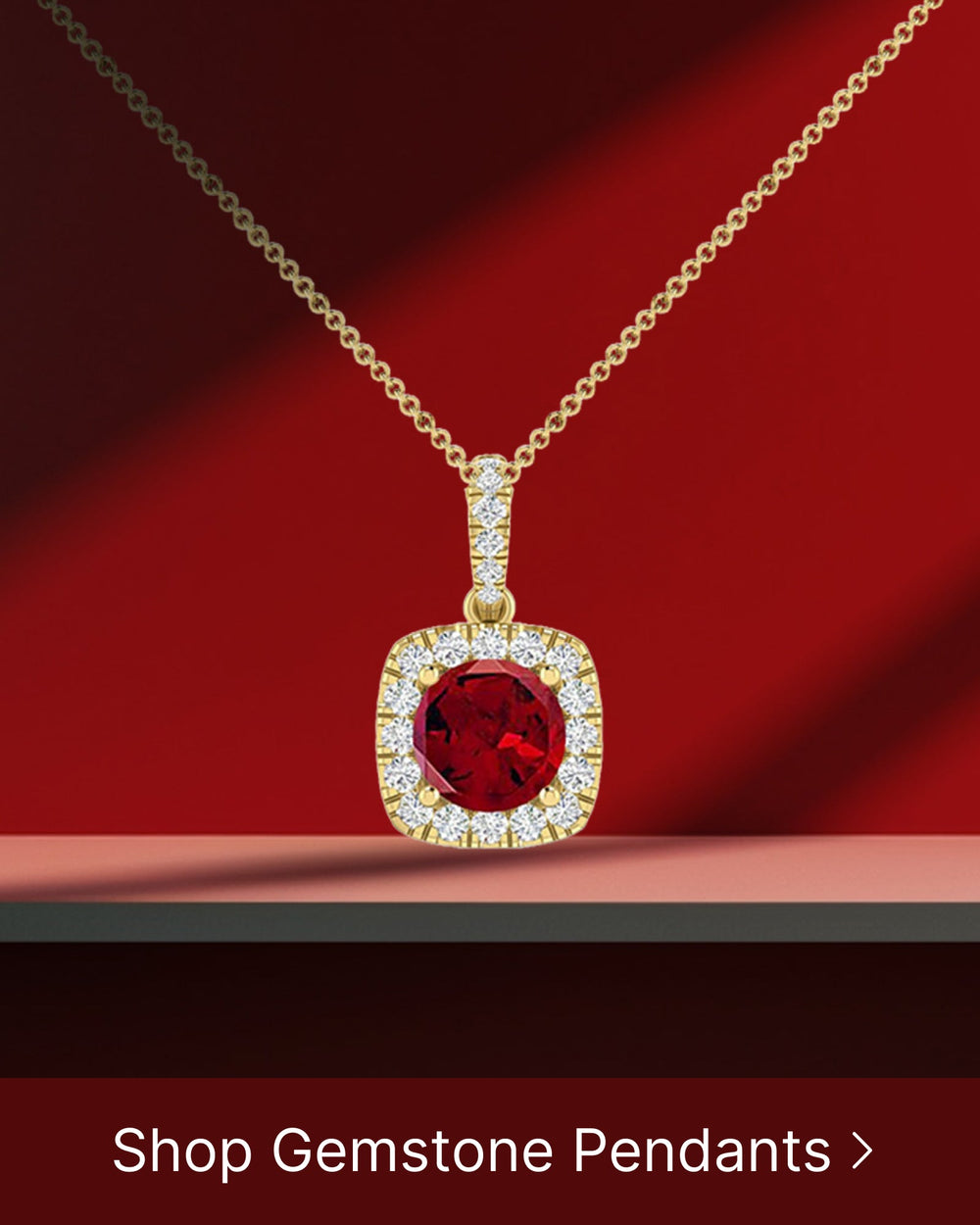Gemstones are highly coveted for their beauty and value. However, with the rising popularity of gemstone imitations and synthetic gems, it has become increasingly important to be able to distinguish between real gemstones and their counterfeit counterparts. In this comprehensive guide, we will take you through the step-by-step process of determining the authenticity of a gemstone.
Understanding the Basics of Gemstones
Gemstones are minerals that are cut and polished to be used in jewelry or other decorative items. They come in a variety of types, each with its own unique characteristics. Before delving into the identification process, it is essential to have a basic understanding of the different types of gemstones.
Gemstones have captivated humans for centuries with their beauty and allure. From the sparkling brilliance of diamonds to the rich hues of rubies and sapphires, these precious stones have been treasured and revered throughout history. But gemstones are not limited to just the precious varieties. There is a vast array of semi-precious gemstones that possess their own charm and appeal.
Different Types of Gemstones
Gemstones can be classified into several categories, including precious stones such as diamonds, rubies, sapphires, and emeralds, as well as semi-precious stones like amethyst, garnet, topaz, and many others. Each type of gemstone has its own chemical composition, crystal structure, and physical properties, which can help in determining its authenticity.
Precious gemstones, like diamonds, are known for their rarity and exceptional beauty. These gems are formed deep within the Earth's crust under intense pressure and heat over millions of years. They are prized for their colorless brilliance, but diamonds can also come in a range of colors, known as fancy diamonds. Rubies, sapphires, and emeralds, on the other hand, are valued for their vibrant colors, with each gemstone exhibiting its own unique shade.
Semi-precious gemstones, although not as rare as their precious counterparts, still possess their own allure. Amethyst, with its purple hues, is a popular gemstone known for its calming properties. Garnet, with its deep red color, symbolizes love and passion. Topaz, available in various shades, is prized for its brilliance and versatility.
Common Characteristics of Genuine Gemstones
Real gemstones possess certain characteristics that set them apart from imitations or synthetic gems. Color, clarity, hardness, and brilliance are some of the key factors to consider when evaluating the authenticity of a gemstone. Genuine gemstones often exhibit vibrant colors, exceptional clarity, high durability, and an unmistakable sparkle.
The color of a gemstone can vary greatly, depending on its type and origin. Precious gemstones, like diamonds, are prized for their colorless or near-colorless appearance. However, colored gemstones, such as rubies and sapphires, derive their value from their vivid and intense hues. The clarity of a gemstone refers to the absence of inclusions or imperfections within the stone. A high level of clarity indicates a gemstone of superior quality.
Hardness is another important characteristic of genuine gemstones. Gemstones are ranked on the Mohs scale of hardness, which measures their resistance to scratching. Diamonds, being the hardest mineral, rank at the top of the scale with a score of 10. Other gemstones have varying degrees of hardness, with some being more susceptible to scratches and wear.
Lastly, the brilliance of a gemstone refers to its ability to reflect and refract light. Genuine gemstones have a captivating sparkle that is a result of their unique crystal structure and the way they interact with light. This brilliance is what makes gemstones truly mesmerizing and sought after.
The Importance of Gemstone Authenticity
Why is it so crucial to be able to identify real gemstones? The answer lies in the value associated with genuine gems and the risks associated with fake ones.
Authentic gemstones, particularly precious stones, are highly valuable and sought after in both the jewelry market and the investment sector. The allure of real gemstones stems from their rarity, beauty, and historical significance. These natural wonders have captivated humans for centuries, adorning crowns, necklaces, and rings of royalty and the elite. The value of real gemstones goes beyond their monetary worth; they hold sentimental and cultural value as well.
Being able to authenticate a gemstone ensures that you are getting what you paid for and enables you to make informed decisions regarding gemstone purchases. It allows you to confidently invest in these precious stones, knowing that you are acquiring a genuine piece of nature's art. The authentication process involves evaluating various factors, such as the gemstone's color, clarity, cut, and carat weight, as well as conducting laboratory tests to confirm its authenticity.
Value of Real Gemstones
Authentic gemstones are not merely objects of desire; they are tangible assets that hold and appreciate in value over time. Unlike other forms of investment, such as stocks or real estate, gemstones offer a unique combination of aesthetic beauty and financial stability. Their value is not subject to the volatility of the stock market or the fluctuations of the housing market.
Investing in real gemstones can provide a hedge against inflation and economic uncertainties. These precious stones have a long history of maintaining their worth and even outperforming traditional investment options. They offer a tangible and portable form of wealth that can be passed down through generations, serving as a symbol of family heritage and legacy.
Risks of Fake Gemstones
Counterfeit gemstones or synthetic alternatives can often be sold as real gemstones, leading to substantial financial losses for unsuspecting buyers. The market for fake gemstones is vast and sophisticated, with skilled counterfeiters replicating the appearance of genuine stones with remarkable precision. These imitations can be challenging to distinguish from the real thing, especially to an untrained eye.
Aside from the financial risks, fake gemstones may lack the durability and longevity of genuine ones, diminishing their overall quality and desirability. Genuine gemstones are formed over millions of years under intense heat and pressure, resulting in their exceptional hardness and resilience. In contrast, synthetic or imitation gemstones are created in laboratories, often using shortcuts and artificial processes that compromise their durability.
Furthermore, fake gemstones do not possess the same metaphysical properties and spiritual significance attributed to their authentic counterparts. Throughout history, gemstones have been believed to possess healing powers, offer protection, and bring good luck. These beliefs have contributed to the enduring fascination and demand for real gemstones.
In conclusion, the importance of gemstone authenticity cannot be overstated. It is not just about the financial value but also the emotional and cultural significance that genuine gemstones hold. By being able to identify real gemstones, you can safeguard your investments, preserve the integrity of the gemstone market, and ensure that these natural wonders continue to be cherished for generations to come.
Tools Needed for Gemstone Verification
Now that you understand the importance of determining gemstone authenticity, let's explore the essential tools needed for this verification process.
Gemstone verification is a crucial step in the jewelry industry. It ensures that customers are getting genuine gemstones and not counterfeit or synthetic ones. To accurately verify gemstones, jewelers rely on a variety of specialized tools. These tools allow them to examine the gemstones up close, inspect their characteristics, and make informed decisions about their authenticity.
The Jeweler's Loupe
A jeweler's loupe is a magnifying device that allows you to examine gemstones up close. It is a small, handheld tool that usually consists of a lens mounted in a metal or plastic frame. The lens provides a magnified view of the gemstone, allowing jewelers to inspect its clarity, color, and inclusions.
When using a jeweler's loupe, jewelers look for any imperfections or irregularities within the gemstone. These imperfections can include internal flaws, such as cracks or bubbles, as well as external blemishes. By carefully examining these characteristics, jewelers can gain valuable insights into the gemstone's authenticity.
Furthermore, the jeweler's loupe helps in identifying any treatments or enhancements that may have been applied to the gemstone. Certain treatments can alter the appearance of a gemstone, making it look more valuable or desirable. However, these treatments can also affect the gemstone's authenticity and overall value.
The Refractometer
Another vital tool used in gemstone verification is the refractometer. This device measures the refractive index of a gemstone, which is a key characteristic influenced by its chemical composition. The refractive index determines how light travels through the gemstone and how it bends or changes direction.
By comparing the refractive index of a gemstone to known values, jewelers can determine if it is genuine or not. Each type of gemstone has a specific refractive index range, and any significant deviation from this range may indicate that the gemstone is not authentic.
During the verification process, jewelers place the gemstone on the refractometer's platform and direct a beam of light through it. The refractometer then measures the angle at which the light is bent, providing a numerical value for the refractive index. This value is compared to a database of known refractive index values to determine the gemstone's authenticity.
It is important to note that while the refractometer is a valuable tool, it is not foolproof. Some gemstones have similar refractive index values, making it challenging to differentiate between them. In such cases, additional tests and examinations may be necessary to confirm the gemstone's authenticity.
As you can see, gemstone verification requires the use of specialized tools like the jeweler's loupe and the refractometer. These tools enable jewelers to examine gemstones up close, inspect their characteristics, and determine their authenticity. By investing in these essential tools, jewelers can provide their customers with genuine gemstones, ensuring trust and satisfaction in the jewelry industry.
Physical Inspection of the Gemstone
Beyond the use of specialized tools, a visual and physical examination of the gemstone itself can reveal valuable information about its authenticity.
Examining the Gemstone's Color
Genuine gemstones often exhibit intense and consistent color throughout the stone. Fake gemstones may have uneven color distribution or show unnatural hues that are indicative of their artificial origin. Careful observation of the stone's color under different lighting conditions can help unveil any inconsistencies.
Checking the Gemstone's Hardness
Gemstones vary in their hardness levels, which is measured on the Mohs scale. Genuine gemstones, such as diamonds, sapphires, and rubies, have high hardness and will not scratch easily. Performing a scratch test, using a known material of lower hardness, can determine if the stone resists scratches or not.
Advanced Techniques for Identifying Real Gemstones
While basic examinations can often yield reliable results, there are more advanced tests available to further ascertain the authenticity of a gemstone.
Conducting a Refraction Test
Using a refractometer, you can measure the gemstone's refractive index and compare it to standard values. This test can help differentiate between real gemstones and synthetic or imitation alternatives, as their refractive properties often differ.
Performing a Specific Gravity Test
By determining the specific gravity of a gemstone, you can gain insights into its density and composition. This information, when compared to established values, can help authenticate a gemstone by confirming its natural origin.
Knowing how to tell if a gem is real is a valuable skill for gem enthusiasts, jewelry collectors, and anyone interested in making informed gemstone purchases. By combining visual inspections with specialized tools and tests, you can confidently identify genuine gemstones and avoid the pitfalls associated with counterfeit alternatives. Remember, authenticity is not just about the financial value of the gemstone but also about its inherent beauty, rarity, and the pride that comes with owning a genuine piece of nature's art.






